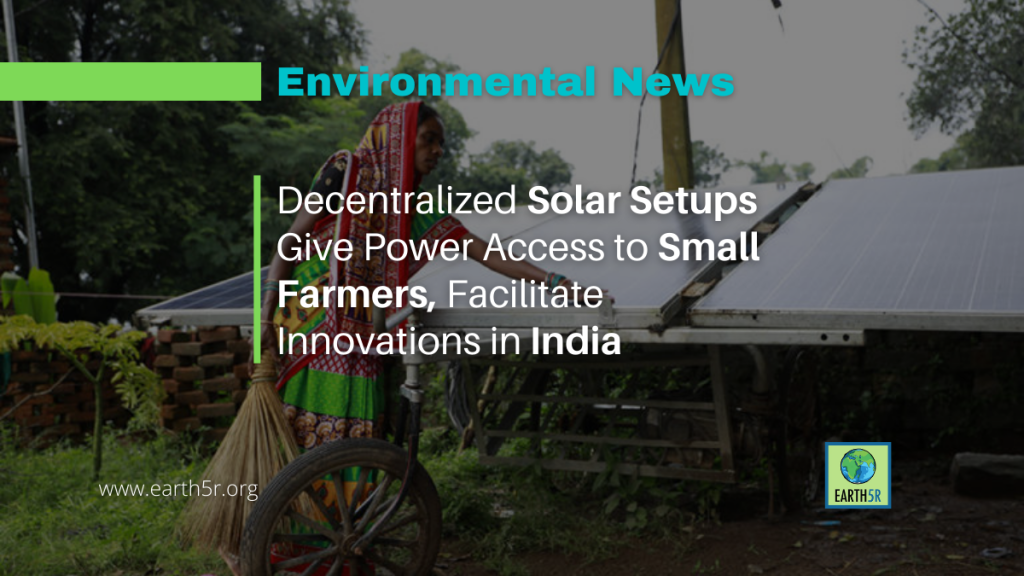
Decentralized Solar Setups Give Power Access To Small Farmers, Facilitate Innovations In India
Environmental News from India:
- India’s agriculture sector accounts for 22 percent of the total power consumed in India. To decrease this burden, India is increasingly turning to decentralised renewable energy (DRE) systems, especially solar power, in rural areas.
- The DRE-based applications have already gained popularity in India and are increasingly being adopted by farmers. Decentralised renewable energy is small-scale, off-grid energy generation units located close to the site of consumption.
- The government is taking a series of steps to address the financial challenges that the DRE sector is facing but much more efforts are required to overcome these challenges.
The past few months have been peaceful for Vitthal Reddy, a sugarcane farmer from Karaknalli village of the Bidar district of Karnataka. After a long time, he managed to save his farm from crop-eating wild boars. For the past 10 years, he had been unsuccessful in finding a solution to animals raiding his crop. But this season he thinks he has finally solved the puzzle. He installed a solar fencing machine to protect the sugarcane crop from wild boar, and, so far, the device is working well.
Around 1,400 kilometres away, Omgiri Goswami from Bhopalgarh in Rajasthan, is also using solar power to irrigate farms and cook fodder for his cattle. His area faces frequent power cuts and during this time it is the solar power that has come to his aid.
Meanwhile, in Manyachiwadi village of Maharashtra’s Satara area, a few women self-help groups came forward to transform the village with solar power. Ravindra Anandrao Mane, sarpanch of Manyachiwadi village, told Mongabay-India that earlier the village used to face power cuts for hours. But then, in 2008, around 100 families of his village, led by women, collected money and installed a 3 kilowatt off-grid solar power system. The total capacity of village’s solar energy is 11 kilowatt including roof-top solar. “Now, we are self-sufficient in terms of our energy needs,” he said.
What is common in these three cases is decentralised solar power that is being used by farmers and people living in rural areas of India. Decentralised power refers to energy generated off the main grid, closer to the site of consumption.
To read top environmental news from India, please visit https://earth5r.org
Source: Mongabay




